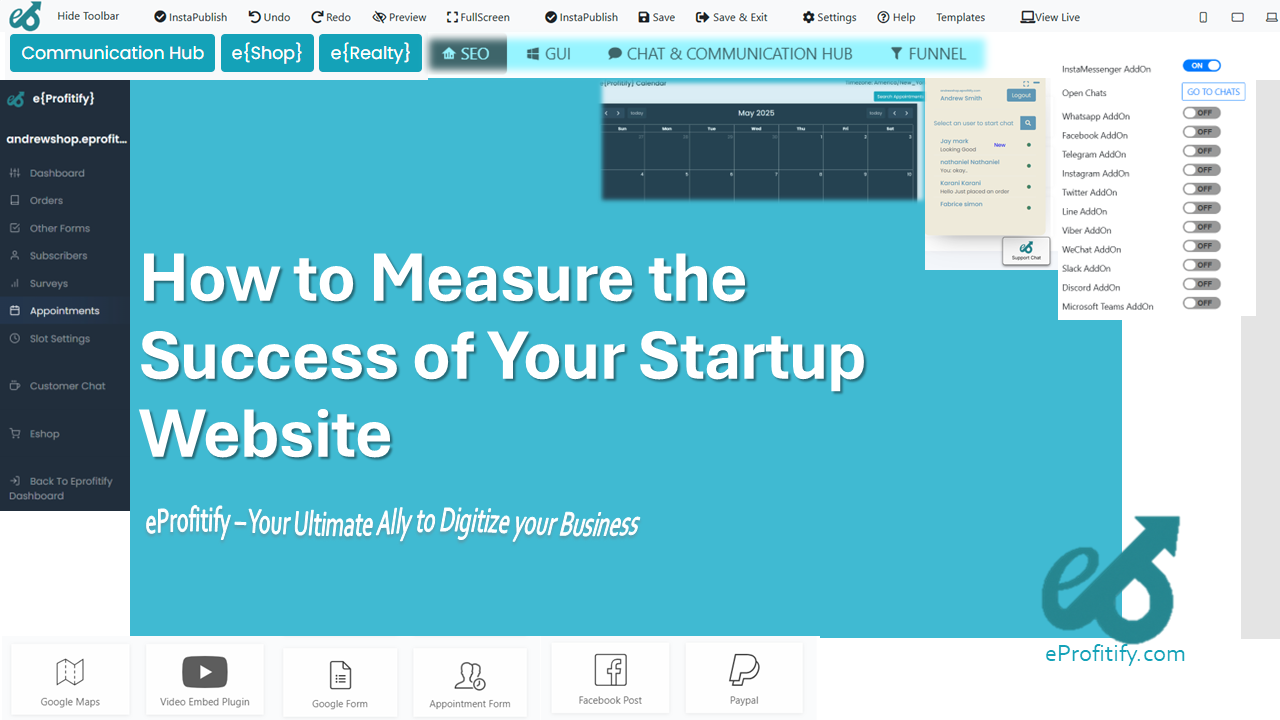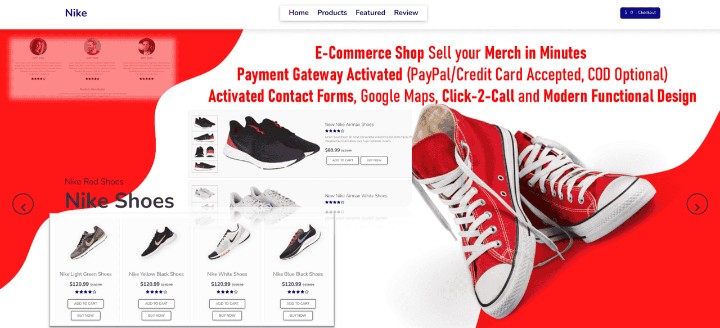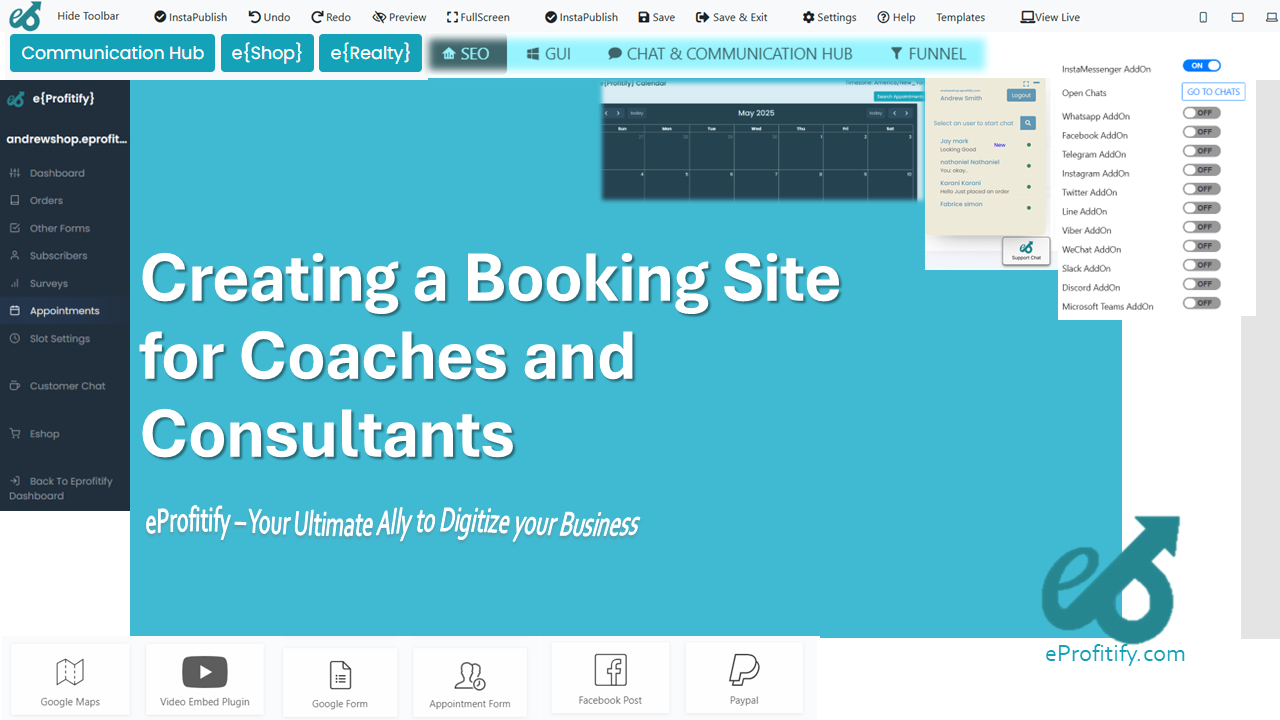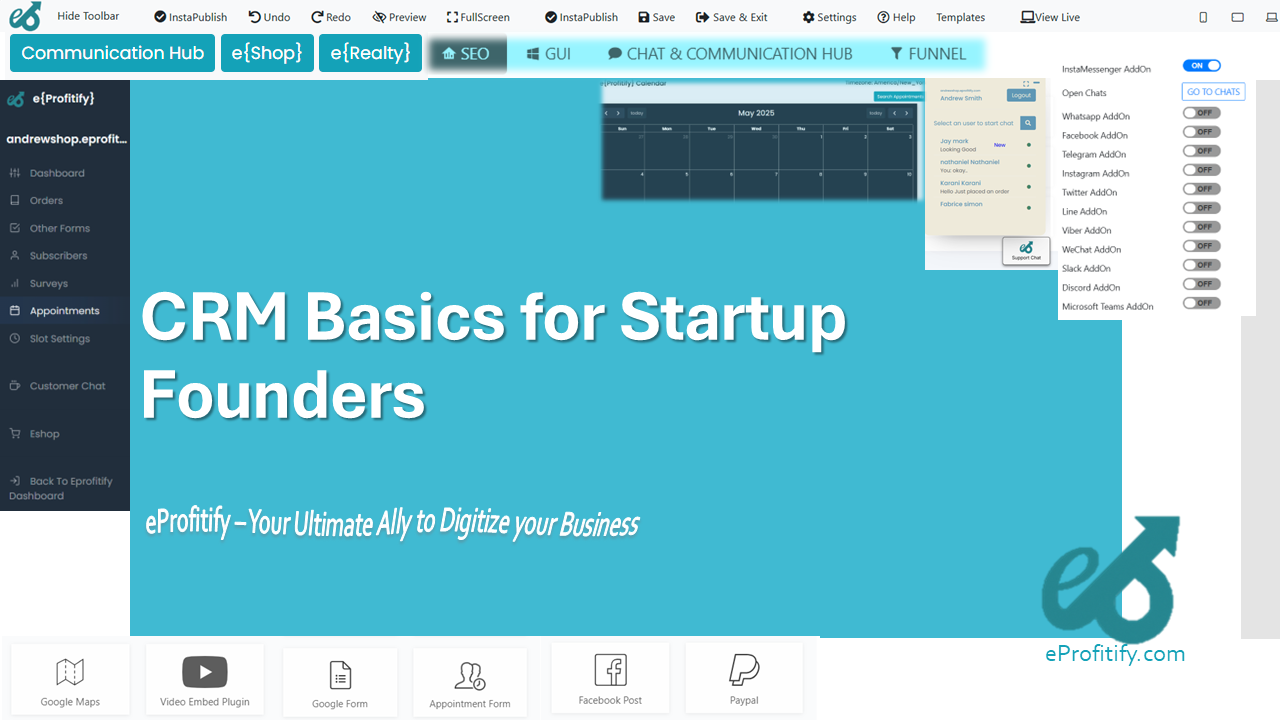How to Measure the Success of Your Startup Website

How to Measure the Success of Your Startup Website
In today’s digital-first world, a startup’s website is often its most critical asset. It serves as the primary interface for attracting customers, building credibility, and driving revenue. However, creating a website is only half the battle. Measuring its success requires a strategic approach that combines data analysis, user feedback, and the right tools. This article explores key metrics, actionable strategies, and innovative solutions—including eProfitify, a leading website publishing and management platform—to help startups accurately gauge their website’s performance.
Why Measuring Website Success Matters
A website’s success directly impacts a startup’s growth trajectory. According to Stanford University, 75% of users judge a company’s credibility based on its website design and usability. For startups, even minor improvements in user experience (UX) or conversion rates can lead to exponential revenue growth. However, without measuring the right metrics, businesses risk wasting resources on ineffective strategies. Let’s dive into the essential indicators of website success.
Key Metrics to Track
-
Traffic Sources
Understanding where your visitors come from helps optimize marketing spend. Organic search, social media, paid ads, and direct traffic each reveal which channels drive the most value. In 2023, 50% of global website traffic originated from mobile devices (Statista), underscoring the need for mobile optimization. -
Bounce Rate
A high bounce rate (users leaving without interaction) signals poor UX or irrelevant content. The average bounce rate across industries is 42–52%, but rates above 70% demand urgent attention (SEMrush). -
Conversion Rate
This metric measures the percentage of visitors completing desired actions (e.g., purchases, sign-ups). The average ecommerce conversion rate is 2.5–3%, though top-performing sites achieve 5% or higher (Baymard Institute). -
Average Session Duration
Longer sessions indicate engaging content. Aim for 2–3 minutes per session; shorter times may suggest poor readability or slow load speeds. -
Customer Acquisition Cost (CAC) vs. Customer Lifetime Value (CLV)
A profitable business model requires CLV to be at least 3x CAC. For startups, balancing these metrics ensures sustainable growth. -
Revenue Metrics
Track average order value (AOV), repeat purchase rate, and total revenue. Startups with AOVs above industry benchmarks often reinvest gains into scaling marketing efforts.
Tools and Strategies for Measurement
1. Analytics Platforms
Google Analytics remains a gold standard for tracking traffic, behavior, and conversions. For deeper insights, heatmap tools like Hotjar visualize user interactions, helping identify UX pain points.
2. A/B Testing
Testing variations of landing pages or CTAs can lift conversion rates by 10–20% (WordStream).
3. User Feedback
Surveys and live chat tools like eProfitify’s Instant Messaging feature enable real-time feedback, reducing bounce rates by addressing user concerns promptly.
eProfitify: A Game-Changer for Startup Success
Measuring website success is easier with all-in-one platforms like eProfitify, which combines publishing, analytics, and management tools tailored for startups:
- Unified CRM: Track customer interactions and calculate CLV through integrated sales pipelines and automated follow-ups.
- Ecommerce Integration: Monitor conversion rates and AOV with built-in inventory management and payment processing.
- Appointment Management: Reduce no-shows by 30% with automated reminders, boosting revenue from service-based bookings.
- Instant Messaging: Resolve queries in real time, improving engagement and reducing bounce rates.
- Analytics Dashboard: Consolidate traffic, conversion, and revenue data for actionable insights.
A 2023 case study found that startups using eProfitify saw a 25% increase in CLV and 15% higher conversion rates within six months, thanks to its seamless tool integration.
Overcoming Measurement Challenges
Startups often face hurdles like data overload or misaligned KPIs. To avoid analysis paralysis:
- Focus on 3–5 core metrics aligned with business goals.
- Use eProfitify’s dashboard to filter noise and prioritize actionable data.
- Regularly audit tools to ensure they adapt to trends like AI-driven analytics.
Conclusion
Measuring a startup website’s success requires a blend of strategic metrics, user-centric tools, and agile adaptation. Platforms like eProfitify empower businesses to streamline this process, offering CRM, ecommerce, and analytics in one solution. By leveraging data-driven insights, startups can optimize their digital presence, reduce CAC, and scale sustainably. In an era where 54% of marketers prioritize conversion rate optimization (WordStream), aligning measurement strategies with innovative tools is no longer optional—it’s essential for survival.
As the digital landscape evolves, startups that master website analytics today will dominate their niches tomorrow. With solutions like eProfitify, the path to success is clearer than ever.








